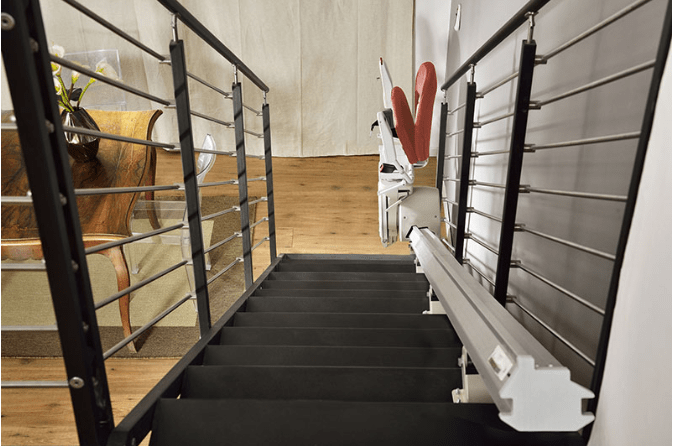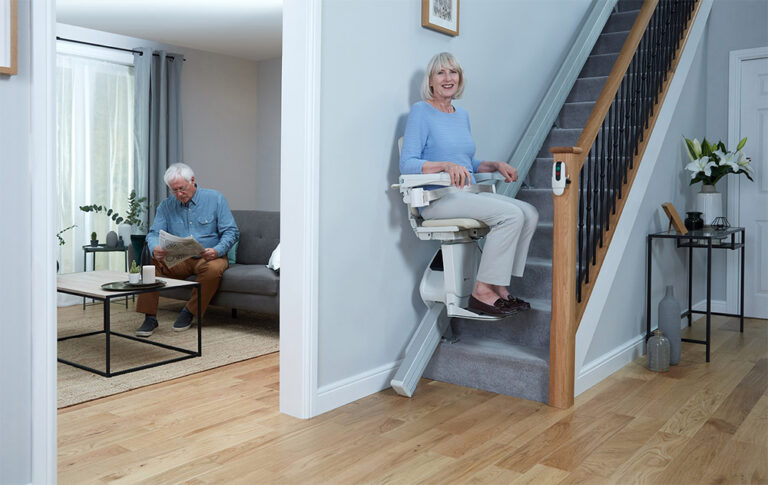Ensuring safe and efficient accessibility for wheelchair users and mobility scooter operators is paramount. Selecting an appropriate ramp is crucial to guaranteeing ease of use and minimising potential risks. This Essential Wheelchair and Mobility Scooter Access Ramp Buying Guide aims to assist you in making an informed decision.
Which Size Disabled Access Ramp Do I Need?
Choosing the right size for your disabled access ramp ensures safe and efficient mobility for individuals using wheelchairs and mobility scooters. The recommended gradients for different mobility aids play a pivotal role in determining the appropriate length of the ramp.
Assisted Manual Wheelchairs:
For individuals using assisted manual wheelchairs, a minimum gradient of 1:6 is advised. This means that for every 1-foot rise (load height), a 6-foot ramp is recommended. The rationale behind this recommendation is to provide a gentle incline that facilitates smooth and safe transitions for wheelchair users. Adhering to the 1:6 gradient allows users to navigate inclines comfortably and without undue exertion.
Mobility Scooters and Unassisted Devices:
On the other hand, mobility scooters, unassisted wheelchairs, and walkers require a gentler gradient of 1:8. In practical terms, this implies that for a 1-foot rise, an 8-foot ramp is necessary. It’s essential to note that the low ground clearance of mobility scooters necessitates longer ramps to ensure a gradual and manageable ascent or descent. This longer length accommodates the unique characteristics of mobility scooters, providing a safe and effective means of access.
Width Considerations:
Beyond length, the width of the ramp is equally significant. It’s crucial to ensure that the chosen ramp is wide enough to accommodate your wheelchair or mobility scooter comfortably. Simultaneously, it should be narrow enough to fit seamlessly into the threshold you intend to bridge, ensuring a smooth and obstacle-free transition.
Practical Examples:
- Assisted Manual Wheelchair: For a 1-foot rise, a 6-foot ramp is recommended.
- Mobility Scooter or Unassisted Device: For a 1-foot rise, an 8-foot ramp is necessary.
Which Ramp Options Do I Have?
As the estimated number of wheelchair users in the United Kingdom continues to rise, surpassing 1.2 million, the need for wheelchair accessibility is more crucial than ever. While progress has been made, many public spaces still lack wheelchair accessibility. Installing a wheelchair ramp at home can significantly enhance mobility and independence. In this section, we’ll delve into various types of home and portable wheelchair ramps to help you make an informed decision.
Threshold Ramps:
- Composition: Made of metal or rubber, designed to sit flush against curbs or door thresholds.
- Height Range: Typically between one and six inches.
- Versatility: Lightweight and usable both indoors and outdoors.
- Benefits: Cost-effective, easy to use, and suitable for wheelchairs, scooters, or walkers.
Lego-Style Threshold Ramps:
- Design: Resembling the popular children’s toy, lightweight and water-permeable.
- Height Options: Available in 1.5-inch and 7.5-inch heights.
- Capacity: Many support up to 300 pounds.
- Note: They are not made of actual Lego but are known for their durability and water drainage.
Folding Ramps:
- Structure: Available as tri-fold (four panels) or bi-fold (two panels) with hinges.
- Limitations: Not ADA-compliant, lacks handrails, intended for personal use.
- Usage: Suitable for placing over stairs leading into a home.
Suitcase Ramps:
- Portability: Highly portable, usually around four feet long.
- Capacity: Capable of supporting around 800lbs.
- Versatility: Useful for personal home use, not ADA-compliant.
Telescoping Ramps:
- Design: Composed of two narrow, retractable channels.
- Adjustability: Can extend or retract to the desired length.
- Compatibility: Beneficial for non-wheelchair-accessible vans.
- Consideration: May need to align correctly with mobile scooters.
Rollable Ramps:
- Material: Typically made of lightweight and durable aluminium.
- Features: Foldable for easy carrying, non-slip surface.
- Usage: Ideal for transitioning in and out of buildings and wheelchair-accessible vans.
Modular Ramps:
- Construction: Larger, more permanent fixtures built off-site.
- Materials: Often constructed with cost-effective and durable aluminium.
- Versatility: Sections can be disassembled and reassembled at different locations.
- Ideal for: Home use, providing a more permanent solution.
Permanent Ramps:
- Materials: Typically made of concrete or wood.
- Adjustability: Fixed in place and cannot be moved.
- Permit Requirement: A building permit is needed for construction.
- Consideration: Offers a more aesthetically integrated solution for home entrances.
How Obam Can Help You
At Obam, we understand that creating an inclusive environment is not just a goal but a commitment. Our extensive range of public and domestic ramps is meticulously designed to empower individuals living with disabilities, ensuring that even daily tasks become seamless and accessible.





